PHILOSOPHY AND AIMS OF EDUCATIONWhat is Early Childhood Education?
Exploring All Effective Teaching Methods and Strategies: A Comprehensive Guide
Teaching methods are important in shaping students’ learning experiences and outcomes. Educators employ various approaches, techniques, and strategies to engage learners, facilitate understanding, and foster academic growth. In this article, we will delve into different types of teaching methods and explore their strengths, weaknesses, and practical examples. Additionally, we will discuss modern and innovative teaching methods, the importance of choosing appropriate strategies, and the qualities of a good teacher. Let’s embark on this enlightening journey of effective teaching methods and techniques.
Understanding the Different Types of Teaching Methods
Teaching methods can be classified into various categories, each offering unique approaches to instruction. Here are the five primary types of teaching methods
Lecture Method
The Lecture Method is a traditional teaching approach where the instructor delivers information or knowledge to students through a structured verbal presentation. In this method, the teacher assumes the role of an expert and imparts knowledge to the learners in a one-way communication format. The lecture typically involves the teacher speaking to the class while students listen and take notes. It is a commonly used instructional method in higher education and large classroom settings.
The Lecture Method follows a predetermined outline or presentation format and is often supported by visual aids such as slides, charts, or multimedia presentations. The primary goal is to transmit information, concepts, theories, or principles to students. The instructor may use examples, anecdotes, and real-life illustrations to enhance understanding and engage students.
The lecture method involves the teacher presenting information to the students in a structured manner. This method is effective for conveying complex concepts and theoretical knowledge. However, it may need more active student engagement. The Lecture Method is a traditional teaching approach where the instructor presents information to students in a structured and authoritative manner. It is often characterised by the teacher speaking to the class while students listen and take notes. This method has been widely used in educational settings, especially in higher education and large group settings.
Structure and Content Delivery In The Lecture Method
The Lecture Method follows a structured format where the instructor organises the content, presents key ideas, and provides explanations. It typically involves a predetermined outline or presentation slides to guide the flow of information. The teacher acts as the primary source of knowledge, sharing expertise and insights on the subject matter.
The lecture method is a teacher-centered approach
In the lecture method, the teacher assumes a central role as the primary disseminator of knowledge. They are responsible for delivering the content, explaining concepts, and addressing students’ questions or concerns. The focus is primarily on the instructor’s expertise and ability to convey information to the learners effectively.
The Lecture Method has a Passive Student Role
One of the main characteristics of the Lecture Method is that students have a passive role in the learning process. They are expected to listen, take notes, and absorb the information the teacher presents. Interaction and participation from students are typically limited, with the primary emphasis on receiving information rather than actively engaging with it.
Advantages of the Lecture Method
Efficient Content Delivery: The Lecture Method allows the dissemination of a large amount of information in a relatively short period. It is useful for introducing new topics, presenting complex ideas, or providing a comprehensive subject overview.
Expertise and Authority: The Lecture Method highlights the knowledge and authority of the instructor. It provides an opportunity for students to benefit from the knowledge and experience of the teacher, who can provide valuable insights and explanations.
Clear Organization: The structured nature of lectures enables the teacher to present information logically organised manner. This helps students understand the sequence of ideas and connect different concepts.
Limitations and Criticisms of the Lecture Method
Passive Learning: The Lecture Method often fosters a passive learning environment where students are expected to listen and memorise information without active participation. This can limit critical thinking, engagement, and deep understanding of the subject matter.
Limited Interaction: The one-way flow of information in lectures may restrict student engagement and opportunities for discussion, collaboration, and questioning. Active participation and interaction among students are often limited.
Learning Style Variations: Lecture-style teaching may not cater to students’ diverse learning styles and preferences. Some learners may need help to absorb information through auditory means alone, while others may benefit from more hands-on or interactive approaches.
Enhancing the Lecture Method
To overcome the limitations of the Lecture Method and make it more effective, instructors can incorporate the following strategies:
Incorporating Interactive Elements: Introducing interactive elements, such as discussions, group activities, or question-and-answer sessions, can encourage student engagement and participation during the lecture.
Supplementing with Multimedia: Integrating multimedia elements, such as visual aids, videos, or interactive presentations, can enhance comprehension and make the lecture more engaging and dynamic.
Providing Opportunities for Application: Instructors can include examples, case studies, or real-world applications to help students connect theoretical concepts to practical contexts, fostering deeper understanding.
Encouraging Note-Taking and Reflection: Promoting active note-taking and reflection during and after the lecture can help students process and consolidate the information presented.
Discussion Method
The discussion method encourages student participation through open conversations and critical thinking. It promotes active learning, collaboration, and the development of analytical skills. The Discussion Method is an interactive teaching approach that promotes active student engagement, critical thinking, and collaborative learning. Unlike the Lecture Method, which is primarily teacher-centred, the Discussion Method emphasizes on student participation, dialogue, and the exchange of ideas.
Student-Centred Learning
The Discussion Method shifts the focus from the teacher to the students, making them active participants in the learning process. It encourages students to express their opinions, ask questions, and engage in thoughtful discussions with their peers and the instructor.
Facilitation and Guidance
The role of the teacher in the Discussion Method is that of a facilitator or moderator. The instructor sets the stage for the discussion, provides guidance, and ensures that the conversation remains focused and productive. The teacher encourages participation, mediates disagreements, and prompts students to think critically about the topic.
Active Engagement and Critical Thinking
The Discussion Method fosters active engagement and critical thinking skills in students. Students are encouraged to analyse information, evaluate different perspectives, and develop their arguments by actively participating in discussions. They learn to articulate their thoughts, defend their viewpoints, and challenge assumptions.
Benefits of the Discussion Method
Knowledge Construction: The Discussion Method allows students to construct knowledge by actively engaging with the subject matter. Through dialogue and debate, students gain a deeper understanding of the topic and develop higher-order thinking skills.
Collaboration and Communication: Discussions create an environment that promotes collaboration and effective communication. Students learn to listen to others, respect diverse viewpoints, and constructively contribute to the conversation. This fosters teamwork and the development of interpersonal skills.
Critical Thinking and Problem-Solving: The open-ended nature of discussions stimulates critical thinking and problem-solving abilities. Students learn to analyse information, evaluate evidence, make connections, and propose innovative solutions to complex problems.
Active Learning: The Discussion Method encourages active learning, as students must actively participate, reflect on their own ideas, and synthesise information from different sources. This leads to better retention and comprehension of the subject matter.
Strategies for Effective Discussions
To ensure productive discussions, instructors can employ the following strategies:
Setting Clear Expectations: Communicate the objectives and guidelines for the discussion, including respectful participation, active listening, and evidence-based arguments.
Preparing Discussion Prompts: Provide thought-provoking questions or prompts that encourage critical thinking and stimulate meaningful discussions.
Establishing Ground Rules: Set rules for respectful dialogue, ensuring all participants express their opinions without interruption or judgment.
Encouraging Equal Participation: Create an inclusive environment where all students feel comfortable participating. Encourage shy students to contribute and ensure that dominant voices do not overpower the discussion.
Providing Feedback and Summarizing: Offer feedback and summaries at key points during the discussion to highlight important insights, clarify misconceptions, and keep the conversation focused.
Integration with Other Teaching Methods
The Discussion Method can be combined with other teaching methods to create a balanced and effective learning experience. For example, instructors can start with a lecture or demonstration to provide foundational knowledge and then transition into a discussion to deepen understanding and promote critical thinking.
Demonstration Method
The demonstration method utilizes visual aids, experiments, or real-life examples to illustrate concepts and enhance understanding. This hands-on approach is particularly effective in subjects that require practical application.
The Demonstration Method is an instructional approach that utilizes visual aids, experiments, real-life examples, or simulations to illustrate concepts and enhance understanding. It is a hands-on teaching method that actively engages students in learning through observation and participation.
Visual and Practical Learning
The Demonstration Method appeals to visual and kinesthetic learners by providing visual representations and practical experiences. Students can see the concepts in action, making understanding and remembering the presented information easier.
Use of Visual Aids and Materials
In the Demonstration Method, teachers use visual aids such as charts, diagrams, models, videos, or slides to enhance the presentation. These aids help visualise complex ideas, processes, or structures, making them more accessible and aun understandable for students.
Experimental and Experiential Learning
Experiments or practical demonstrations are key components of the Demonstration MethodStudentsts are actively involved in the learn examples by witnessing experiments or real-life examples. They can observe cause-and-effect relationships, analyse outcomes, and draw conclusions based on their observations.
Engagement and Active Participation
The Demonstration Method encourages students to actively participate in the learning experience actively. They may be involved in the preparation, execution, or analysis of the demonstration. This hands-on approach sparks curiosity, stimulates critical thinking, and fosters a deeper understanding of the subject matter.
Benefits of the Demonstration Method
Concrete UnderstandingUsingof visual aids and practical demonstrations help students form a concrete understanding of abstract or complex concepts. They can grasp the information more effectively by seeing and experiencing the concepts firsthand.
Memory Retention: The Demonstration Method provides visual and experiential cues for better memory retention. Students can recall the information more easily by connecting it to the visual representations or experiences they witnessed during the demonstration
Conceptualization and Application: The method facilitates the connection between theory and real-life application. By observing how concepts work in practice, students can better understand their relevance and how they can be applied in different scenarios.
Active Engagement: The Demonstration Methoy engages students, encouraging them to ask questions, make predictions, and draw conclusions. This promotes critical thinking skills and fosters a sense of curiosity and exploration.
Effective Use of the Demonstration Method
To maximise the effectiveness of the Demonstration Method, teachers can consider the following strategies:
Clear Objectives: Set clear learning objectives for the demonstration to ensure students understand the purpose and expected outcomes.
Step-by-Step Explanation: Provide a step-by-step explanation of the demonstration, highlighting key points and connections to the underlying concepts.
Opportunities for Reflection: Encourage students to reflect on their observations, make predictions, and discuss their findings. This promotes deeper understanding and critical thinking.
Guided Discussion: Facilitate a guided discussion after the demonstration to encourage students to share their observations, ask questions, and draw conclusions collaboratively.
Reinforcement and Application: Reinforce the concepts learned through the demonstration by providing opportunities for students to apply the knowledge in different contexts or through related activities.
Cooperative Learning Method
Cooperative learning involves group activities where students work together to solve problems, complete projects, or accomplish learning objectives. It promotes teamwork, communication, and peer-to-peer learning.
The Cooperative Learning Method is an instructional approach that emphasises collaborative learning and active student participation. It involves organising students into small groups to work together on academic tasks, fostering interaction, shared responsibility, and developing social skills.
Group Formation In the Cooperative Learning
In Cooperative Learning Method, students are divided into small groups, typically consisting of three to five members. Group composition can be heterogeneous, with students of different abilities, backgrounds, and learning styles, or homogeneous, with students of similar abilities working together. The goal is to create a supportive and inclusive learning environment where students can benefit from each other’s strengths and perspectives.
Positive Interdependence:
Cooperative learning promotes positive interdependence among group members. Each student’s success depends on the entire group’s success, fostering a sense of shared responsibility. This encourages students to collaborate, support one another, and work towards a common goal.
Individual Accountability
While students work collaboratively in groups, individual accountability is maintained. Each student is responsible for contributing to the group’s efforts and achieving their own learning goals. This ensures that all students actively participate, engage in the learning process, and take ownership of their progress.
Cooperative Learning Promotes Interactions and Communication
Cooperative learning encourages active interactions and effective communication among group members. Students discuss ideas, share their thoughts, ask questions, and explain concepts to one another. This promotes critical thinking, clarifies misunderstandings, and allows students to construct knowledge collectively.
Benefits of the Cooperative Learning Method
Enhanced Learning: Cooperative learning provides opportunities for students to engage in active learning, deepen their understanding of concepts, and develop higher-order thinking skills. Through collaborative discussions and interactions, students can gain different perspectives, challenge assumptions, and construct new knowledge together.
Social Skill Development: Working in groups fosters the development of social skills such as communication, teamwork, empathy, and conflict resolution. Students learn to cooperate, respect diverse viewpoints, and effectively collaborate with their peers.
Increased Motivation: Cooperative learning creates a supportive and inclusive learning environment where students feel valued and motivated. The sense of belonging and shared responsibility encourages students to participate, take risks, and strive for success actively.
Positive Interactions: The method promotes student interactions, improving relationships and a more positive classroom atmosphere. Students build trust, res, and empathy for one another, creating a conducive environment for learning and growth.
Effective Implementation of Cooperative Learning:
To effectively implement cooperative learning in the classroom, teachers can consider the following strategies:
Clear Instructions and Expectations: Provide clear instructions to students regarding the group tasks, roles, and expectations. Ensure that students understand the purpose of cooperative learning and the specific learning goals.
Group Norms and Roles: Establish group norms that promote positive interactions, respect, and equal participation. Assign or allow students to take on different roles within the group, such as a facilitator, recorder, or timekeeper, to ensure equal distribution of responsibilities.
Structured Activities: Design activities that promote active engagement, critical thinking, and collaboration. Provide students with structured tasks or guiding questions facilitating meaningful discussions and problem-solving.
Monitor and Support: Circulate among groups, observe student interactions, and provide guidance and support as needed. Address any conflicts or challenges that may arise within the groups and encourage students to resolve issues collaboratively.
Reflection and Feedback: Provide opportunities for students to reflect on their collective learning experiences. Encourage them to evaluate their own contributions and the effectiveness of their group interactions. Offer constructive feedback to help students improve their collaboration skills.
Inquiry-Based Method
The inquiry-based method emphasises student-led exploration and discovery. It encourages learners to ask questions, investigate topics, and construct knowledge independently. This method enhances critical thinking and problem-solving abilities.
The Inquiry-Based Method is an instructional approach that emphasises student-led investigation, critical thinking, and active learning. It involves posing questions, exploring ideas, conducting studies, and drawing conclusions through a process of inquiry. This method promotes curiosity, problem-solving skills, and a deeper understanding of concepts.
Student-Led Investigation
In the Inquiry-Based Method, students actively participate in their learning by posing questions, formulating hypotheses, and designing investigations. They engage in hands-on exploration, data collection, and analysis to seek answers and make meaning of the concepts being studied. This process encourages independent thinking and self-directed learning.
Questioning and Curiosity
The Inquiry-Based Method nurtures students’ natural curiosity and encourages them to ask questions about the world around them. Teachers provide open-ended questions that promote critical thinking and stimulate inquiry. Students learn to generate their own questions, investigate possible solutions, and seek evidence to support their claims.
Problem-Solving and Critical Thinking
Through investigations, students develop problem-solving skills and critical thinking abilities. They learn to analyse information, evaluate evidence, make connections, and draw conclusions based on their investigations. Inquiry-based learning encourages students to think deeply, examine multiple perspectives, and develop logical reasoning skills.
Active Learning and Engagement
The Inquiry-Based Method promotes active learning, as students actively participate in the learning process rather than passively receiving information. They engage in hands-on activities, experiments, research, or real-world applications to explore concepts in a meaningful context. This active engagement enhances retention and understanding of the subject matter.
Benefits of the Inquiry-Based Method
Deep Understanding: Inquiry-based learning promotes a deep understanding of concepts by encouraging students to explore and construct their own knowledge. Through hands-on investigations, students can connect abstract concepts to real-life situations, making learning more meaningful and memorable.
Curiosity and Motivation: By nurturing students’ curiosity and encouraging their own investigations, the method fosters intrinsic motivation and a love for learning. Students become actively engaged and take ownership of their learning, leading to increased enthusiasm and engagement.
Problem-Solving Skills: The Inquiry-Based Method develops students’ problem-solving skills by learning to identify problems, generate hypotheses, design investigations, and evaluate outcomes. These skills are transferable and applicable to various real-life situations.
Collaboration and Communication: Inquiry-based learning often involves collaborative group work, which enhances communication and teamwork skills. Students learn to listen, share ideas, negotiate solutions, and effectively communicate their findings to others.
Lifelong Learning: The Inquiry-Based Method promotes a mindset of lifelong learning and inquiry. Students develop skills and attitudes that are valuable beyond the classroom, such as curiosity, critical thinking, and the ability to seek answers independently.
Effective Implementation of Inquiry-Based Learning
To effectively implement the Inquiry-Based Method, teachers can consider the following strategies:
Guided Exploration: Provide a framework or set of guiding questions to focus students’ investigations and ensure alignment with the learning objectives.
Scaffolded Support: Offer support and guidance during the inquiry process, especially in the early stages. Gradually release responsibility to students as they become more proficient in generating questions, designing investigations, and drawing conclusions.
Resources and Materials: Provide access to resources, materials, and tools necessary for students to conduct their investigations. This may include books, articles, technology, laboratory equipment, or real-world materials.
Reflection and Evaluation: Encourage students to reflect on their inquiry process, evaluate their findings, and consider the limitations and implications of their investigations. This helps them develop metacognitive skills and enhances their ability to engage in self-directed learning.
Exploring Major Methods of Teaching
Apart from the types mentioned above, there are four major methods of teaching widely used in educational settings:
Direct Instruction
Direct Instruction is an instructional approach that involves explicit teaching, structured lessons, and teacher-led instruction. It is a highly structured and systematic method to deliver information and ensure content mastery efficiently. The Direct Instruction method focuses on clear communication, active engagement, and frequent feedback to facilitate student learning.
Clear Learning Objectives: Direct Instruction begins with clearly defined learning objectives. Teachers identify the specific knowledge and skills that students are expected to acquire. These objectives guide the design and delivery of the instructional content.
Explicit Teaching: Direct Instruction emphasises explicit teaching, where teachers directly and explicitly present information to students. Teachers break down complex concepts into smaller, manageable components and provide clear explanations, demonstrations, and examples to faing.
Structured Lessons: Lessons in Direct Instruction are carefully structured and sequenced to ensure optimal learning. The content is presented logically, starting with foundational concepts and gradually progressing to more complex ideas. This systematic approach helps students build a strong foundation of knowledge and skills.
Active Student Engagement: While Direct Instruction involves teacher-led instruction and encourages active student engagement. Teachers incorporate opportunities for students to participate, respond, and interact during the lesson. This may include asking questions, solving problems, engaging in discussions, or completing guided practice activities.
Continuous Assessment and Feedback: Direct Instruction incorporates constant assessment and feedback to monitor student progress and provide timely guidance. Teachers use formative assessments, such as questioning, observation, or short quizzes, to gauge student understanding. Feedback is provided to reinforce correct responses, clarify misconceptions, and guide students toward mastery.
Mastery Learning: Direct Instruction promotes mastery learning, which means students are expected to achieve a high level of proficiency in the targeted skills or content before moving on to the next topic. This approach ensures that students develop a strong foundation and minimizes learning gaps.
Benefits of Direct Instruction
Clarity and Efficiency: Direct Instruction provides clear explanations, examples, and demonstrations, reducing ambiguity and confusion. The structured nature of the method allows for efficient delivery of content, maximizing instructional time.
Mastery and Retention: Direct Instruction aims for mastery, ensuring that students acquire a deep understanding of the content. The systematic approach and continuous feedback help students retain information and transfer it to new contexts.
Support for Diverse Learners: The explicit and structured nature of Direct Instruction benefits diverse learners, including students with learning disabilities, English language learners, or those who require additional support. Clear instruction and guided practice help all students access and engage with the content.
Accountability and Progress Monitoring: Direct Instruction promotes accountability for both teachers and students. Teachers can closely track student progress, identify weaknesses, and provide targeted interventions. Students can monitor their own growth and take ownership of their learning.
Transference of Skills: Direct Instruction emphasises the application of learned skills in real-world contexts. Students are encouraged to transfer their knowledge to solve problems, make connections, and apply their learning to new situations.
Effective Implementation of Direct Instruction
To effectively implement Direct Instruction, teachers can consider the following strategies:
- Clear Communication: Ensure that instructions, explanations, and examples are communicated clearly and concisely to students.
- Active Engagement: Incorporate opportunities for active student engagement, such as discussions, group work, or hands-on activities, to reinforce learning.
- Differentiated Instruction: Modify instruction and provide additional support or challenge based on individual student needs.
- Regular Assessment: Use formative assessments to monitor student understanding, provide immediate feedback, and adjust instruction accordingly.
- Gradual Release of Responsibility: Gradually shift the responsibility from the teacher to the students as they demonstrate mastery, allowing for independent practice and application.
- Indirect Instruction
Indirect instruction encourages students to construct their own knowledge by providing opportunities for exploration, problem-solving, and self-discovery. This method promotes independence and creativity.
Indirect Instruction is an instructional approach that promotes student-centered learning, discovery, and inquiry. It involves creating learning experiences where students actively construct knowledge, make connections, and engage in critical thinking. Indirect Instruction focuses on student exploration, problem-solving, and the aplication of skills in real-life contexts.
Student-Centred Learning: In Indirect Instruction, the focus is on the students rather than the teacher. The learning experiences are designed Student-Centredge, active student participation and ownership of learning. Students take on a more active role in the learning process, while the teacher serves as a facilitator and guide.
Discovery and Inquiry: Indirect Instruction encourages students to discover and explore concepts independently. They are provided with opportunities to ask questions, investigate, and find solutions. Through inquiry-based activities, students develop critical thinking skills, problem-solving abilities, and a deeper understanding of the content.
Problem-Solving and Critical Thinking: Indirect Instruction promotes problem-solving and critical thinking skills by presenting students with authentic, real-world problems or situations. Students analyze information, make connections, generate hypotheses, and propose solutions. This process fosters creativity, logical reasoning, and the ability to apply knowledge in meaningful ways.
Active Engagement: In Indirect Instruction, students actively engage in the learning process. They participate in hands-on activities, discussions, experiments, or projects that require them to apply their knowledge and skills. This active engagement enhances their understanding, retention, and transfer of learning to new situations.
Collaboration and Communication: Indirect Instruction often involves collaborative learning experiences where students work together in groups. They share ideas, discuss concepts, and solve problems collectively. This collaborative approach fosters effective communication, teamwork, and the development of social skills.
Benefits of Indirect Instruction
- Active Learning: Indirect Instruction promotes active engagement and participation, allowing students to construct their own knowledge and meaning. This active learning approach leads to a deeper understanding and long-term retention of concepts.
- Critical Thinking Skills: By engaging in inquiry-based activities, students develop. critical thinking skills such as analysis, synthesise, evaluation, and problem-solving. They learn to question, investigate, and emphasise decisions.
- Authentic Application: Indirect Instruction emphasises how knowledgable-life contexts. Students see the relevance of their learning and understand how it can be applied to solve problems or address challenges in the world around them.
- Self-Directed Learning: Indirect Instruction nurtures students’ ability to become independent learners. They develop the skills and confidence to explore, research, and seek answers on their own, fostering a lifelong love for learning.
- Engagement and Motivation: By providing opportunities for student exploration, discovery, and problem-solving, Indirect Instruction promotes intrinsic motivation and engagement. Students feel a sense of ownership and excitement about their learning.
Effective Implementation of Indirect Instruction
To effectively implement Indirect Instruction, teachers can consider the following strategies:
- Design Authentic Learning Experiences: Create learning experiences that reflect real-world problems, challenges, or situations. Provide opportunities for students to investigate, analyze, and propose solutions.
- Inquiry-Based Approach: Encourage students to ask questions, investigate, and explore multiple perspectives. Guide them through the process of inquiry, but allow for student autonomy and decision-making.
- Facilitate Collaboration: Design activities that promote collaboration and teamwork. Provide guidelines and structures for effective group work, ensuring that all students have a voice and actively contribute.
- Scaffolded Support: Offer support and guidance as students engage in independent exploration and problem-solving. Gradually release responsibility, allowing students to take on more independent roles as they develop their skills.
- Reflection and Metacognition: Incorporate opportunities for students to reflect on their learning process, evaluate their understanding, and set goals for improvement. Encourage metacognitive thinking and self-assessment.
-
Experiential Learning
Experiential learning involves hands-on experiences, field trips, simulations, and real-world applications to facilitate active engagement and deeper understanding. It immerses students in practical contexts to enhance learning outcomes.
Experiential Learning is an instructional approach that focuses on active engagement, hands-on experiences, and reflection to facilitate learning. It involves the process of learning through direct experience, allowing students to actively participate, explore, and make meaning of the concepts being taught. Experiential Learning encourages the integration of knowledge and skills gained through real-world applications.
- Active Engagement: Experiential Learning places an emphasis on active engagement. Students are actively involved in the learning process, rather than being passive recipients of information. They participate in hands-on activities, experiments, simulations, or real-life experiences that allow them to engage with the subject matter in a meaningful way.
- Direct Experience: Central to Experiential Learning is the concept of direct experience. Students have opportunities to directly interact with the subject matter, objects, or phenomena being studied. This could involve field trips, experiments, role-playing, or other experiential activities that provide firsthand encounters with the concepts being taught.
- Reflection: Reflection is a key component of Experiential Learning. After engaging in the direct experience, students are guided to reflect on their observations, analyse their experiences, and draw connections to theoretical concepts. Reflection encourages deeper understanding, critical thinking, and applying knowledge to different contexts.
- Application to Real-World Contexts: Experiential Learning emphasises applying knowledge and skills to real-world situations. Students are encouraged to transfer their learning to practical scenarios, allowing them to see the relevance and practicality of what they have learned. This application enhances their understanding and prepares them for real-life challenges.
- Constructivist Approach: Experiential Learning aligns with the constructivist approach to education, which views learning as an active process of constructing knowledge. Students construct their understanding by making connections between prior knowledge and new experiences. Through hands-on experiences and reflection, students actively build their own knowledge and meaning.
Benefits of Experiential Learning
- Active and Engaged Learning: Experiential Learning promotes active engagement and participation, leading to a deeper understanding and retention of knowledge. Students are motivated to learn as they directly interact with the subject matter.
- Practical Application: Experiential Learning helps students apply theoretical concepts to real-life situations. It enhances their problem-solving skills, critical thinking abilities, and the ability to transfer knowledge to practical contexts.
- Holistic Development: Experiential Learning fosters the development of various skills beyond academic knowledge. Students develop communication skills, teamwork, adaptability, and resilience through experiential activities.
- Personal Connection: Experiential Learning allows students to connect their own experiences, interests, and perspectives to the learning process. This personal connection enhances motivation and makes learning more meaningful.
- Long-Term Retention: Experiential Learning promotes long-term retention of knowledge and skills. By engaging multiple senses and emotions during direct experiences, students form strong memories and connections to the learning content.
Effective Implementation of Experiential Learning: To effectively implement Experiential Learning, teachers can consider the following strategies:
- Plan Engaging Experiences: Design activities that provide hands-on, immersive experiences related to the learning objectives. Incorporate real-world scenarios, experiments, simulations, or project-based learning.
- Facilitate Reflection: Allocate time for reflection after the experiential activity. Encourage students to think critically about their experiences, analyse observations, and connect them to theoretical concepts.
- Foster Collaboration: Create opportunities for collaboration and discussion among students during the experiential learning process. This encourages the sharing of perspectives, ideas, and collective sense-making.
- Align with Curriculum: Ensure that the experiential activities align with the learning objectives and curriculum standards. The experiences should reinforce key concepts and skills targeted for learning.
- Provide Guidance and Support: Act as a facilitator, guiding students through the experiential learning process. Provide scaffolding, ask probing questions, and offer support as students reflect on their experiences.
-
Collaborative Learning
Collaborative learning emphasizes teamwork, cooperation, and collective problem-solving. Students work together to accomplish goals, share ideas, and support each other’s learning process. Collaborative Learning is an instructional approach that encourages students to work together in groups or teams to achieve shared learning goals. It involves the active participation of students in cooperative activities, discussions, projects, or problem-solving tasks. Collaborative Learning fosters social interaction, peer support, and the exchange of ideas, promoting a deeper understanding of the subject matter.
- Group Work and Team Collaboration: Collaborative Learning places an emphasis on group work and team collaboration. Students are organized into small groups, typically consisting of 3 to 5 members, to engage in learning activities. Each group member contributes to the collective effort, working together to achieve common learning objectives.
- Shared Responsibility: In Collaborative Learning, each group member shares the responsibility for their own learning and the success of the group. Students take on different roles and tasks within the group, such as facilitator, recorder, researcher, or presenter. This shared responsibility encourages active engagement and equal participation from all group members.
- Active Engagement and Participation: Collaborative Learning promotes active engagement and participation among students. They interact with one another, exchange ideas, share perspectives, and contribute to group discussions. This active involvement enhances their understanding, critical thinking skills, and communication abilities.
- Communication and Social Interaction: Collaborative Learning provides opportunities for students to engage in meaningful communication and social interaction. Through discussions, debates, brainstorming sessions, or peer feedback, students learn to articulate their thoughts, listen to others, and engage in respectful dialogue through discussions, debates, brainstorming sessions, or peer feedback. This communication fosters the development of interpersonal skills and the ability to work effectively in a team.
- Peer Learning and Support: Collaborative Learning leverages the power of peer learning and support. Students learn from one another by sharing their knowledge, insights, and experiences. They can explain concepts, clarify doubts, and provide assistance to their peers. Peer learning creates a supportive and inclusive learning environment, where students feel comfortable asking questions and seeking help.
Benefits of Collaborative Learning:
- Enhanced Learning: Collaborative Learning promotes active engagement and participation, leading to a deeper understanding of the subject matter. Students gain multiple perspectives and insights through discussions, explanations, and interactions with peers.
- Development of Social Skills: Collaborative Learning nurtures the development of social skills such as teamwork, communication, and collaboration. Students learn to work together, respect diverse opinions, and resolve conflicts, preparing them for future collaborative endeavours.
- Critical Thinking and Problem-Solving: Collaborative Learning encourages students to think critically, analyse, and problem-solve. Through collaborative activities and discussions, students learn to evaluate information, consider different viewpoints, and propose solutions.
- Increased Motivation: Collaborative Learning promotes intrinsic motivation as students feel a sense of ownership, responsibility, and accountability for their learning. The interactive and supportive nature of collaborative activities and enhances student engagement and enjoyment.
- Preparation for the Real World: Collaborative Learning prepares students for the real-world work environment, where collaboration and teamwork are valued. It equips them with skills such as communication, cooperation, and negotiation that are essential for success in professional settings.
- Effective Implementation of Collaborative Learning: To effectively implement Collaborative Learning, teachers can consider the following strategies:
- Clear Learning Goals: Clearly communicate the learning goals and expectations to students. Ensure that the collaborative activities align with the desired learning outcomes.
- Group Formation: Form groups strategically, considering factors such as diverse abilities, strengths, and personalities. Aim for balanced group dynamics and ensure equal opportunities for participation.
- Structured Activities: Design structured collaborative activities that provide clear guidelines, roles, and tasks for each group member. Provide resources, prompts, or guiding questions to support the collaborative process.
- Facilitation and Monitoring: Act as a facilitator, observing group interactions, providing guidance, and ensuring that all group members are actively participating. Encourage equal participation and offer support when needed.
- Reflection and Assessment: Incorporate reflection opportunities for students to evaluate their collaborative experiences, reflect on their learning process, and set goals for improvement. Assess individual and group performance based on predetermined criteria.
Identifying the Best Teaching Method for Optimal Learning:
Determining the most effective teaching method requires considering various factors such as the subject matter, student preferences, and desired learning outcomes. No single method is universally superior, as each has its strengths and weaknesses. Effective teachers employ a combination of methods to cater to diverse learners and adapt to different learning environments. In the field of education, finding the best teaching method for optimal learning is a critical endeavor. Teachers and educators strive to create effective instructional strategies that cater to the diverse needs of their students and promote meaningful learning experiences. While there is no one-size-fits-all approach, several factors should be considered when identifying the best teaching method for optimal learning.
- Learner-Centered Approach: An effective teaching method should prioritize the needs and characteristics of the learners. Recognizing that students have different learning styles, abilities, and backgrounds is crucial. By adopting a learner-centered approach, teachers can personalize instruction, tailor content delivery, and provide appropriate support to address individual student needs. Understanding the learning preferences, interests, and strengths of students can help determine the most suitable teaching methods.
- Clear Learning Objectives: Before selecting a teaching method, it is essential to establish clear learning objectives. What knowledge, skills, or attitudes do you want students to acquire? Clearly defined learning objectives serve as a guide for selecting the appropriate teaching method that aligns with the desired outcomes. The teaching method should support the attainment of these objectives and provide opportunities for students to engage with the content in a meaningful way.
- Consideration of Content: Different teaching methods are better suited for different types of content. For example, the lecture method may effectively convey factual information. On the other hand, hands-on activities, experiments, or group discussions may be more suitable for developing problem-solving skills or promoting critical thinking. Matching the teaching method to the nature of the content ensures that students can engage with the material effectively and achieve a deeper understanding.
- Active Engagement and Participation: An effective teaching method should promote active engagement and student participation. Passive learning, where students are mere recipients of information, may lead to limited retention and understanding. Instead, teaching methods that encourage active involvement, such as collaborative learning, experiential learning, or inquiry-based learning, foster deeper engagement, critical thinking, and knowledge application. Students should have opportunities to interact with the content, participate in discussions, ask questions, and engage in hands-on activities.
- Assessment and Feedback: Assessment plays a crucial role in identifying the best teaching method for optimal learning. Continuous assessment provides valuable insights into student progress, learning gaps, and areas for improvement. By using formative assessments, teachers can gauge student understanding and adjust their teaching methods accordingly. Additionally, providing timely and constructive feedback enables students to monitor their own learning, make improvements, and consolidate their understanding.
- Flexibility and Adaptability: The best teaching method is one that allows for flexibility and adaptability. Teachers should be prepared to modify their instructional strategies based on ongoing assessment, student feedback, and individual needs. Being responsive to student feedback and adjusting the teaching methods accordingly enhances student engagement and promotes effective learning.
- Professional Development and Research: Teachers should engage in continuous professional development to stay informed about current educational research, emerging teaching methods, and pedagogical approaches. Keeping abreast of best practices and innovations in education equips teachers with a broader repertoire of teaching methods and strategies. Professional development opportunities, collaboration with colleagues, and exploring research literature contribute to the identification of the best teaching method for optimal learning.
Exploring Modern Teaching Methods:
Modern teaching methods leverage technological advancements and innovative pedagogical approaches to enhance learning experiences. These methods often incorporate the use of multimedia tools, interactive platforms, and online resources to create dynamic and engaging learning environments. Examples include flipped classrooms, blended learning, gamification, and the integration of educational apps.
The Importance of Teaching Methods
Choosing appropriate teaching methods is essential for creating an effective and conducive learning environment. The right strategies can foster student engagement, improve comprehension, and promote long-term knowledge retention. By catering to diverse learning styles and needs, teaching methods can facilitate inclusive education and maximize student potential.
The field of education is constantly evolving, and with advancements in technology and a deeper understanding of learning theories, modern teaching methods have emerged. These innovative approaches to teaching aim to enhance student engagement, foster critical thinking skills, and prepare students for the challenges of the 21st century. Let’s explore some of the modern teaching methods that are gaining popularity in classrooms today.
- Blended Learning: Blended Learning combines traditional face-to-face instruction with online learning components. It integrates the benefits of in-person interactions with the flexibility and accessibility of online resources. Teachers utilise digital tools, such as learning management systems, online discussions, multimedia resources, and interactive activities, to supplement and enrich classroom instruction. Blended Learning allows for personalized learning experiences, student-paced progress, and the opportunity to differentiate instruction based on individual needs.
- Flipped Classroom: In the Flipped Classroom model, the traditional notion of homework and classwork is reversed. Students are introduced to new concepts and content outside of the classroom through pre-recorded lectures, readings, or online resources. Classroom time is then dedicated to active learning experiences, such as discussions, collaborative projects, problem-solving activities, or hands-on experiments. This approach allows students to engage with the material in a deeper and more meaningful way and provides opportunities for personalized instruction and immediate feedback.
- Project-Based Learning (PBL): Project-Based Learning is an inquiry-based approach that immerses students in real-world projects or complex problems. Students collaborate in groups to investigate, research, and solve authentic, interdisciplinary problems. PBL emphasises critical thinking, problem-solving, communication, and collaboration skills. Students take ownership of their learning and develop a deeper understanding of the subject matter as they apply their knowledge in a practical and meaningful context.
- Gamification: Gamification involves integrating game elements and mechanics into the learning process. Teachers create a more engaging and motivating learning environment by incorporating elements such as points, badges, leaderboards, and levels. Gamification can be applied to various subjects and age groups, fostering student motivation, enhancing problem-solving skills, and promoting healthy competition. It encourages students to take risks, persist in their learning, and celebrate achievements.
- Personalized Learning: Personalized Learning recognizes that students have unique learning needs, interests, and preferences. This approach tailors instruction to meet the individual needs of each student. Through the use of technology, adaptive learning platforms, and data-driven insights, teachers can provide customised learning experiences. Students can learn at their own pace, explore their interests, and receive targeted support and feedback. Personalised Learning enhances student autonomy, promotes intrinsic motivation, and encourages a deeper level of engagement.
- Collaborative Learning Spaces: Modern teaching methods emphasize the importance of creating collaborative learning spaces. These spaces are designed to facilitate communication, teamwork, and creativity. Flexible seating arrangements, interactive displays, and technology integration support student collaboration, discussion, and knowledge sharing. Collaborative Learning Spaces foster a sense of community, encourage peer-to-peer learning, and promote the development of critical thinking and communication skills.
- Flipped Mastery: Flipped Mastery builds upon the Flipped Classroom model by incorporating mastery-based learning. Students progress through the curriculum at their own pace, mastering each concept before moving on to the next. Teachers provide personalized support, guidance, and targeted interventions as needed. Flipped Mastery allows for individualized instruction, differentiated learning paths, and a focus on competency and deep understanding.
- Virtual and Augmented Reality: Virtual and Augmented Reality technologies offer immersive and interactive learning experiences. Virtual Reality (VR) provides simulated environments that allow students to explore and interact with subjects that may be otherwise inaccessible. Augmented Reality (AR) overlays digital content onto the real world, enhancing the learning experience and making abstract concepts more tangible.
https://youtu.be/PRvztzOh7G
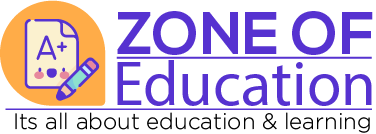
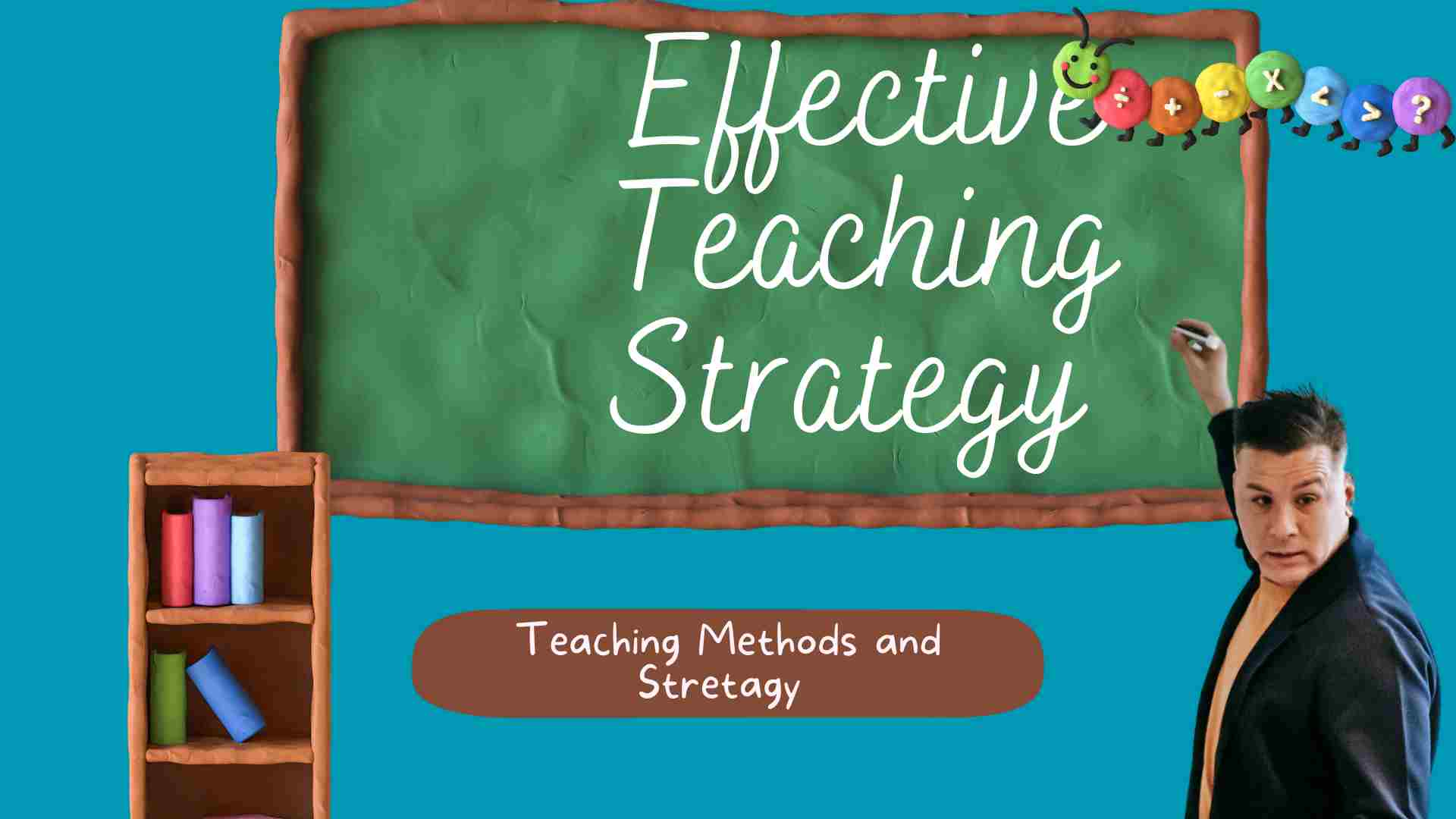
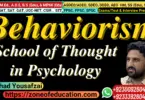
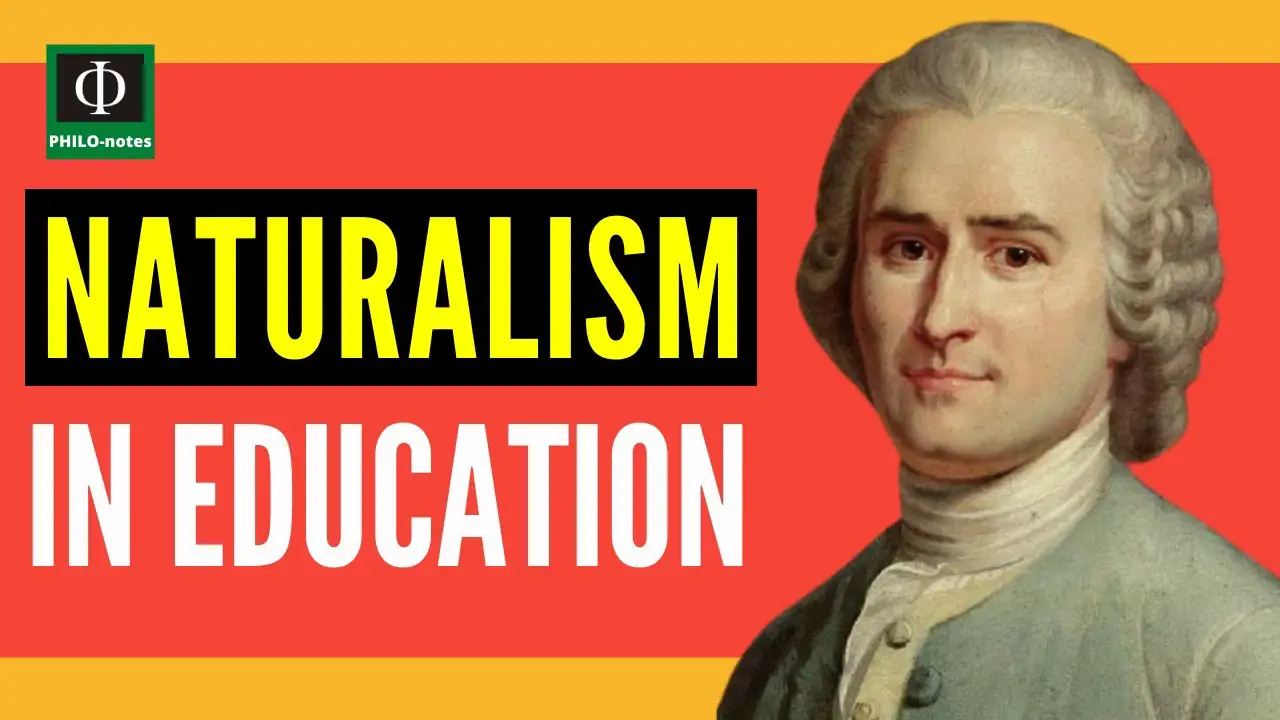

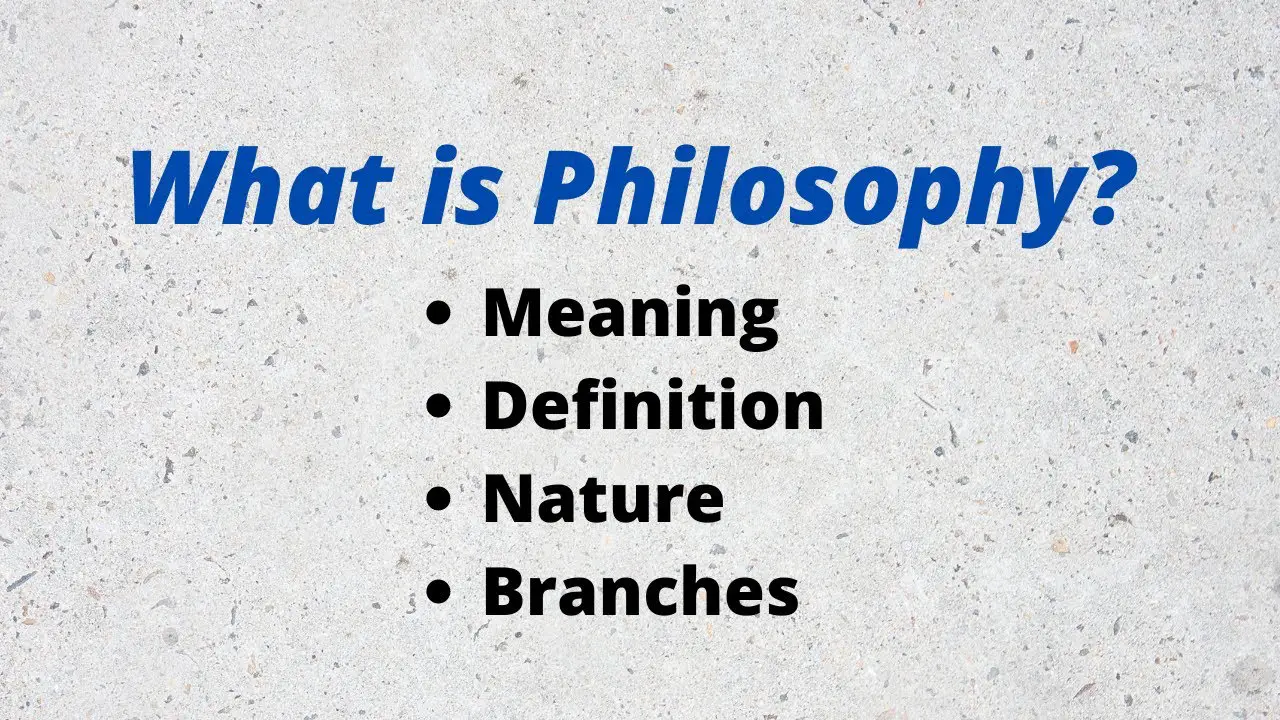
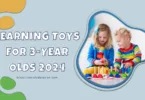

[…] Using a variety of teaching methods […]
[…] teaching techniques have gained prominence in education as effective strategies to promote active engagement, critical thinking, and social skills development among students. By […]
[…] conclusion, developing a classroom routine is fundamental to effective teaching. By establishing clear expectations, providing visual representations, and maintaining consistency, […]
[…] for comprehending the purpose and aims of education. It informs educational policy-making, supports effective teaching and learning, develops creativity and innovation, and promotes lifelong learning. For educators, a […]
[…] To Read Effective Teaching Techniques, Click Here […]
[…] in Mathematics: Employ the Socratic Method to guide students through mathematical problem-solving processes, promoting critical thinking and logical […]
[…] foundation that will help them keep learning and growing for the rest of their lives. Many strategies and ideas have been made to guide teaching and learning in the field. One such philosophy is that there are specific, permanent ideas and […]
[…] identify their strengths and weaknesses. This type of assessment allows educators to adjust their teaching methods and provide additional support if needed. On the other hand, summative assessment is carried out at […]
[…] A well-managed classroom is not only beneficial for students but also for teachers. In such an environment, teachers are more likely to experience job satisfaction and less likely to suffer from stress and burnout. Moreover, when less time is spent on discipline issues, more time can be devoted to instruction and learning activities, thus enhancing teaching effectiveness. […]
[…] Evaluation allows teachers to compare what was intended in learning, progress, and behavior with what was achieved. By conducting continuous inspections and analyzing all available information, teachers can form accurate judgments about their students’ learning outcomes and the effectiveness of their instructional strategies. […]
[…] By understanding the individual learning needs of each student, educators can adapt their teaching strategies to maximize student engagement and […]
[…] in the assessment process, assessment for learning emphasizes using assessment data to guide teaching and provide feedback for […]
[…] A study investigating the effectiveness of a new teaching method in a diverse classroom setting. Researchers combine quantitative assessments of student performance […]
[…] in education is an emphasis on practical outcomes, stressing real-world applications and adapting teaching strategies to match students’ […]
[…] the most important method of teaching, according to the naturalist, is to leave the child free to learn from nature. Naturalism was […]
[…] Pragmatism aims to create humanitarian values in every sphere of education, the methods of teaching, aims, curricula, etc. Education of all kinds should aim at evolving human […]
[…] that you want to investigate how well a new teaching method performs in terms of improving student engagement and of course learning outcomes. in this case, […]
[…] characters by instilling respect for moral and spiritual values. They must be knowledgeable about teaching strategies and techniques to enhance the effectiveness of […]
[…] the goals and objectives of education and provides a framework for designing curricula, selecting teaching methods, and evaluating student […]
[…] can these two methods of God’s revelation teach […]
[…] of a particular intervention. For example, an experimental study may be used to determine the effectiveness of a new teaching strategy. The experimental group would receive the new teaching strategy, while the control group would not. […]
[…] also the interpretation of results, the provision of feedback, and the adjustment of instructional strategies to meet students’ needs effectively. Assessment, in essence, is the ongoing dialogue between educators and learners, facilitating […]
[…] active and they should indulge in the mutual exchange of experience so that they can progress. The teaching method should be such that the child should recognize it as a mode of […]
[…] Effective teaching and learning are integral components of a successful educational experience. Educators employ various strategies to engage students, facilitate comprehension, and promote critical thinking skills. In this section, we will explore a range of strategies that educators can utilize to enhance teaching and learning outcomes. […]
[…] their lesson plans or utilize existing ones created by their colleagues. When determining the teaching methods, teachers consider students’ background knowledge, learning goals, and the learning environment. […]
[…] teaching methods include a wide range of approaches that depart from traditional instructional practices to […]
[…] competencies, which are highly valued in today’s professional world. Working in a team teaches students how to effectively communicate, listen to others, needs, and resolve conflicts. These skills are essential for […]
[…] laying the groundwork for Western philosophy. Plato’s dialogues, characterized by their Socratic method and exploration of metaphysical and ethical themes, remain foundational texts in the history of philosophy. His […]
[…] I am deeply invested in understanding the intricate relationship between psychology and teaching practices to enhance student learning and promote effective pedagogy. In my role as a writer of books and articles on psychology and teaching, I aim to bridge […]
[…] for proactive problem-solving. Benefits may include providing a clear structure for the research, guiding the selection of appropriate methods and tools, and facilitating the interpretation of findings. On the other hand, challenges may […]
[…] to educate children. James argued that laboratory Psychology experiments often tell us how to effectively teach children. He emphasized the importance of observing teaching and learning in classrooms for […]
[…] Effective Teaching for Diverse Learners: Educational psychology offers insights into effective teach… for individuals with specific learning challenges, such as dyslexia, dyscalculia, or ADHD. By […]